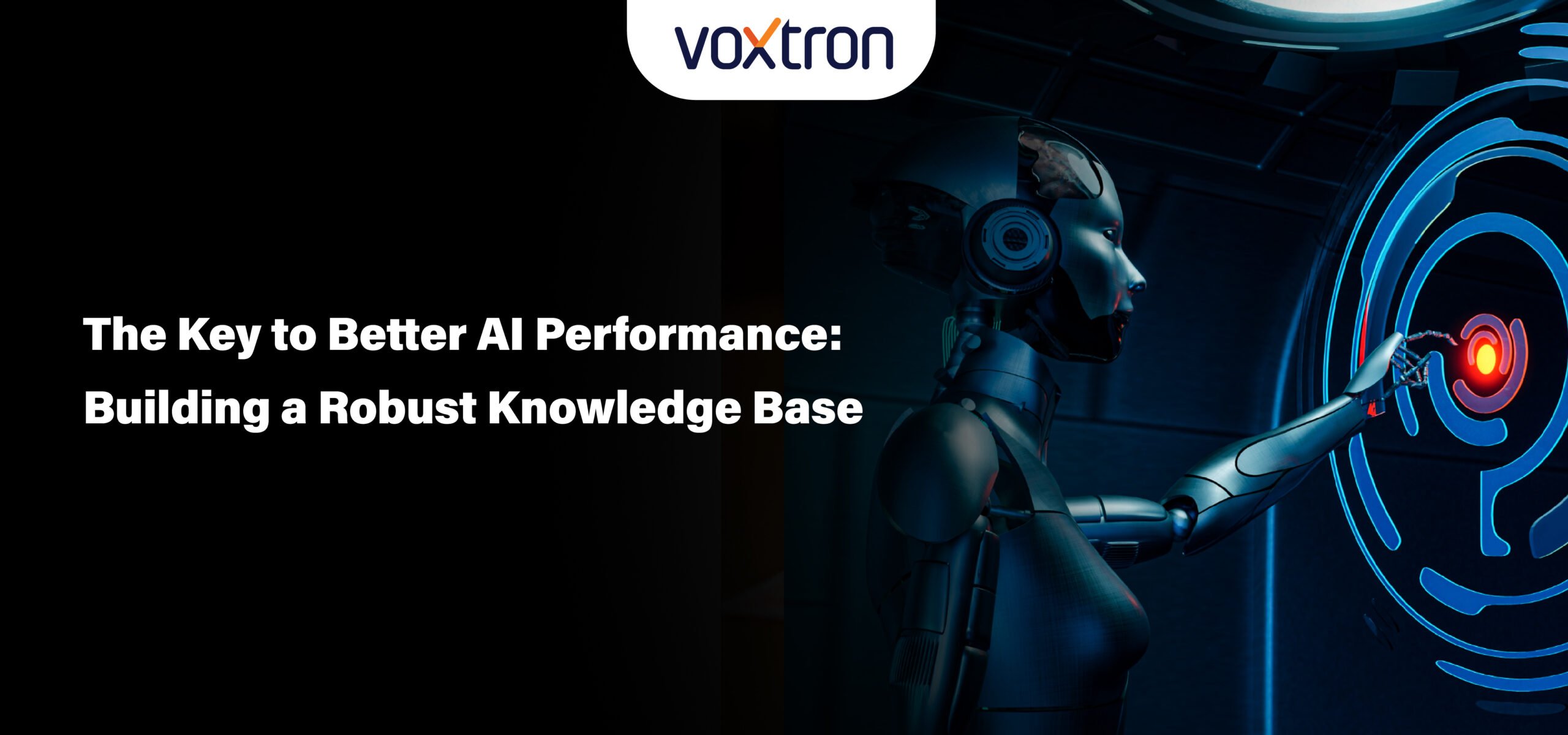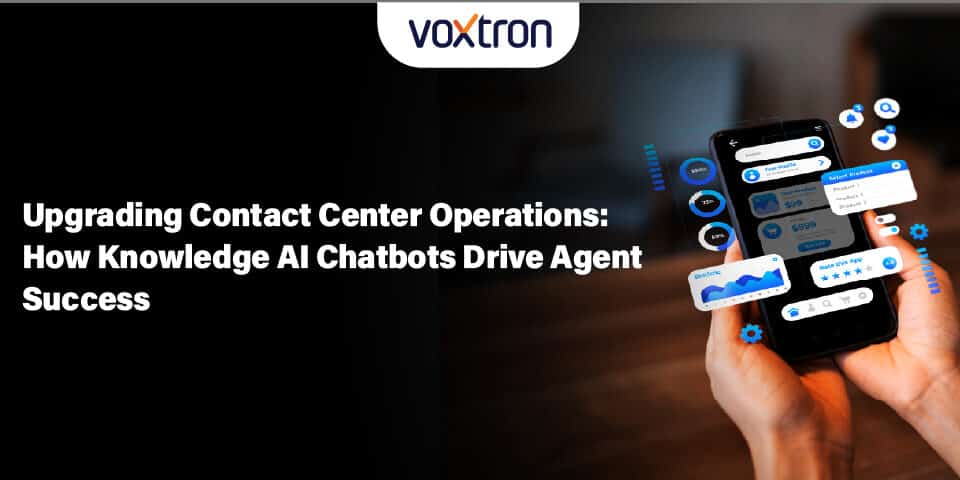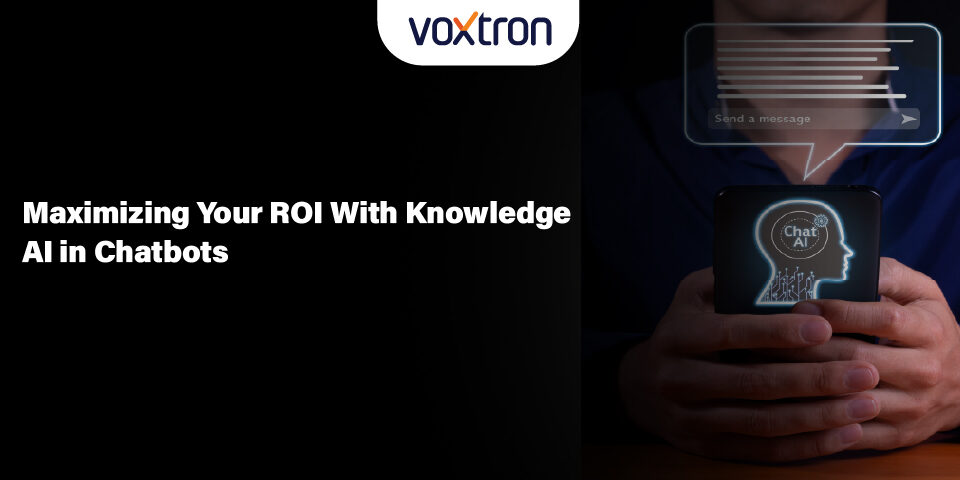
Driving Adoption After ERP Go-Live: Getting the Most from Your Odoo Investment
September 17, 2025
Upgrading Contact Center Operations: How Knowledge AI Chatbots Drive Agent Success
October 21, 2025The Key to Better AI Performance: Building a Robust Knowledge Base
Behind every high-performing chatbot is a robust, well-maintained knowledge base. Without it, even the most advanced AI flounders, leading to inaccurate answers, frustrated users, and avoidable risks.
This article explores why knowledge base quality matters, how any organization can design, structure, and maintain one effectively, and which best practices leaders should champion to ensure scale, accuracy, and consistency.
Why is a Quality Knowledge Base Essential for Chatbot Success?
A knowledge base functions as the “brain” of your chatbot. The more accurate, current, and well-structured it is, the smarter and more reliable your AI becomes:
- Response accuracy and consistency
A high-quality knowledge base ensures AI draws from a single, coherent source. This prevents mistakes or inconsistencies that can cascade into flawed responses or conflicting answers. - Improved resolution speed and self-service
With streamlined content and clarity, AI chatbots resolve queries much faster. They often deliver full resolutions far quicker than human agents. Studies show 24/7 availability, faster responses, and significant uplift in productivity when bots lean on solid knowledge bases. - Operational cost reduction
AI-powered knowledge base chatbots manage repetitive inquiries, deflecting tickets and easing human load. This helps enterprises enjoy greater cost savings, while reducing agent burnout. - Mitigation of risks
Outdated or conflicting information can lead to legal, regulatory, or reputational harms. This is particularly important in sectors such as airlines, healthcare, and public services. Implementing structured QA via Knowledge-Centered Service (KCS) ensures accuracy and compliance
Why Quality Matters in a Knowledge Base
A knowledge base isn’t just a support tool. It stores all important information, from product FAQs to policy guides and troubleshooting workflows, and simplifies support interactions for customers and agents.
Thus, it is a well-maintained resource that ensures that AI-powered bots and live representatives can find answers instantly, reducing customer wait times and minimizing errors.
- Faster resolutions mean happier customers and less agent frustration.
- Consistent information builds trust and enhances brand reputation.
- A clear, up-to-date knowledge base filters out repetitive queries, letting agents focus on complex issues that add real value
Types of Knowledge Base–Powered Chatbots
AI chatbots can be classified into the following, based on how they intrinsically leverage knowledge:
- Traditional FAQ/Rule-Based Chatbots
These rely on keyword matching and scripted flows. Fast to deploy but limited in nuance and scalability. - AI-Powered Knowledge Base Chatbots
These use NLP and ML to interpret intent, retrieve precise answers, and summarize content from a knowledge base, enabling dynamic, conversational self-service. - Hybrid AI Agents
These are the most advanced form of AI agents. They employ generative AI, context awareness, backend integrations, and workflow orchestration to resolve complex issues end-to-end.
Understanding these categories helps leadership pick the ideal approach for their customer needs and complexity.
Building a High-Performance Chatbot Knowledge Base
Below is a roadmap leaders across industries can follow to build a best-in-class knowledge base.
1. Start with a Content Audit
Catalog all existing support resources like FAQs, manuals, chat transcripts, training material, and SOPs. Additionally, identify gaps, outdated references, and duplicate entries. Retire redundant data and ensure only verified, current information remains accessible. This step prevents “garbage in, garbage out,” a common cause of poor chatbot performance.
2. Optimize for Natural Language
A knowledge base should use clear, simple language, add synonyms. Weave in relevant keywords that match real search intent. This ensures chatbots understand and respond naturally to user queries.
3. Structure and Categorize Effectively
Organize entries into well-defined categories with searchable tags and metadata. Furthermore, group related topics together for intuitive navigation. This structure not only improves chatbot efficiency but also streamlines agent workflows when queries escalate.
4. Define Clear Objectives and Governance
Beyond content, governance is crucial. Leadership teams should establish measurable goals such as self-service resolution rate or reduced average handling time. Additionally, they should also assign ownership for content accuracy, IT architecture, and knowledge management.
5. Update and Expand Frequently
Knowledge bases are never “done.” Establish regular review cycles to refresh content in line with product changes, regulatory updates, and customer feedback. Encourage agility by adding trending topics. This ensures bots remain relevant and responsive.
6. Empower Continuous Feedback
Enable both customers and agents to flag outdated entries, suggest improvements, or request new content directly within the system. This human-in-the-loop approach closes gaps and accelerates the knowledge base’s evolution.
7. Choose the Right Technical Architecture
Select the right foundation for scaling. Options like retrieval-augmented generation (RAG) allow dynamic retrieval of up-to-date knowledge, while fine-tuned models embed core data for efficiency. Using metadata, chunking, and vector indexing ensures responses are accurate and contextually relevant.
8. Connect, Pilot, and Test
Integrate the knowledge base with chatbots and run pilots to test tone, accuracy, and escalation flows. Quality assurance frameworks, such as Knowledge-Centered Service (KCS), help validate accuracy before scaling.
9. Monitor and Analyze Usage Data
Leverage analytics tools to identify which knowledge articles are most viewed, where chatbots struggle, and what topics consistently escalate to live agents. Insights from these patterns help refine and expand the knowledge base. Thus, it ensures it continues to meet real-world demand.
10. Maintain and Scale
Automate ingestion of updated content through ETL workflows, de-duplicate records, and archive obsolete material. As the business grows, expand the knowledge base to cover new services, product lines, or languages.
Engage 360: Putting AI chatbot Principles into Action
Engage 360 by Voxtron is a comprehensive, Knowledge AI-powered chatbot solution designed for forward-thinking contact center operations. At its core lies a powerful, updatable knowledge base that ensures nuanced, accurate interactions.
By combining auto-learning, seamless escalation, CRM data context, and marketing triggers, Engage 360 helps businesses leverage their knowledge intelligently. It helps agents to deliver efficient self-service, reduces wait times, and enables human agents to focus on high-value work.
For organizations looking to adopt a knowledge-centric AI chatbot with modern capabilities, its architecture reflects best practices: strong knowledge governance, integration, transparency, and performance monitoring.
Conclusion
A high-performance AI chatbot is built on a disciplined, evolving knowledge base. Instead, it requires a strategic roadmap consisting of goal-setting, structured KB building, technical integration, QA, analytics, and human-in-the-loop oversight to transform into a valuable customer support tool.
A fine example of an AI chatbot with these capabilities is Engage 360. For more details about this intelligent bot and how it can help your business, contact our team today.




